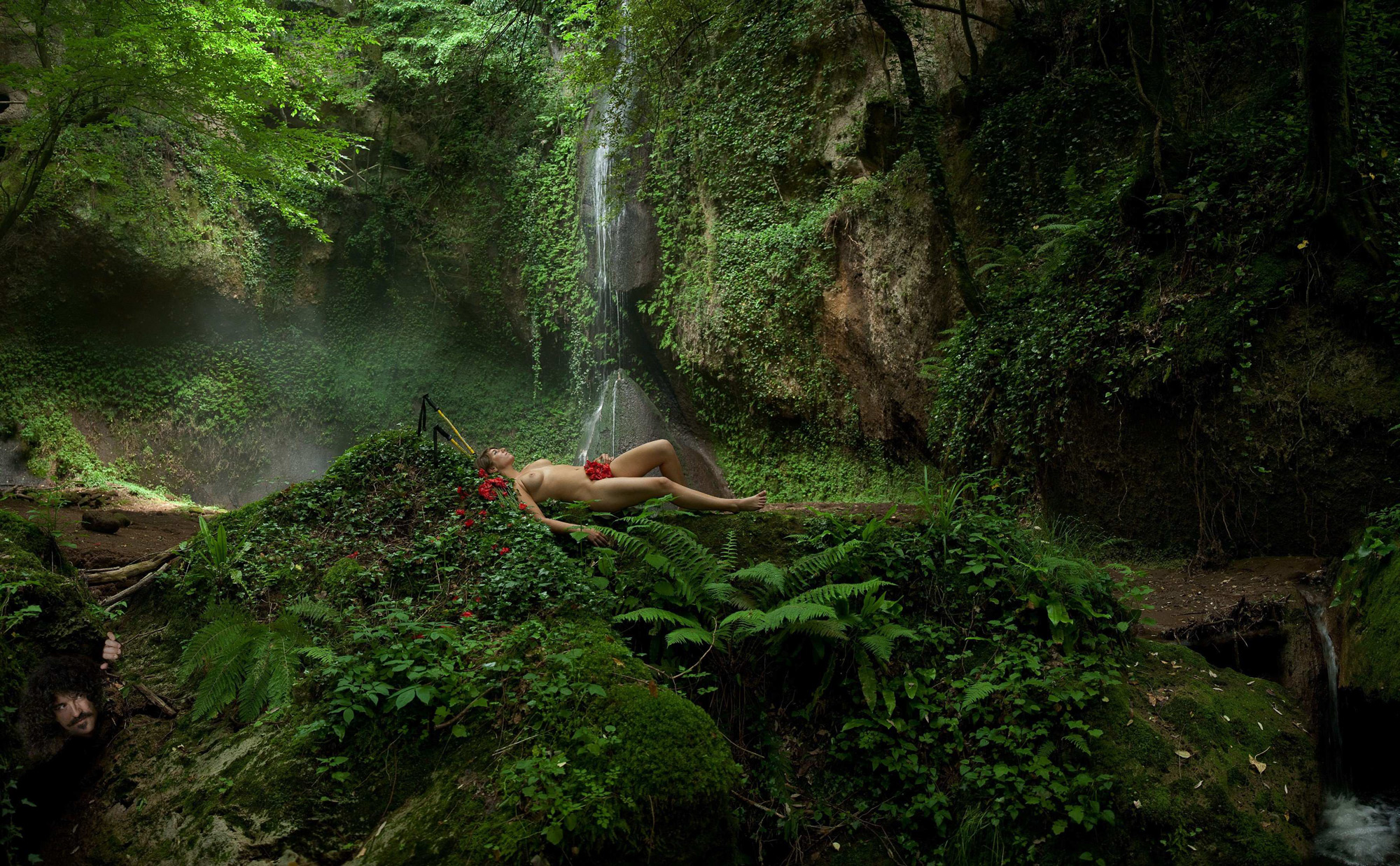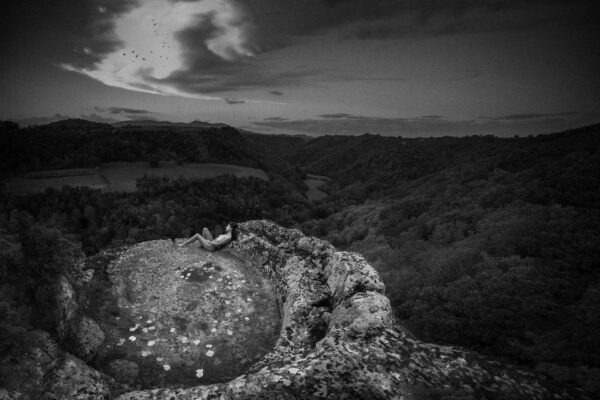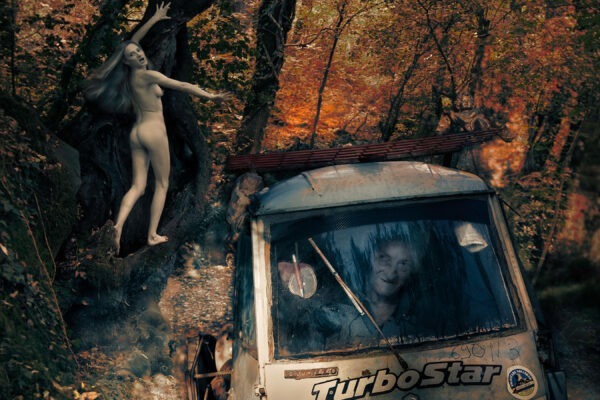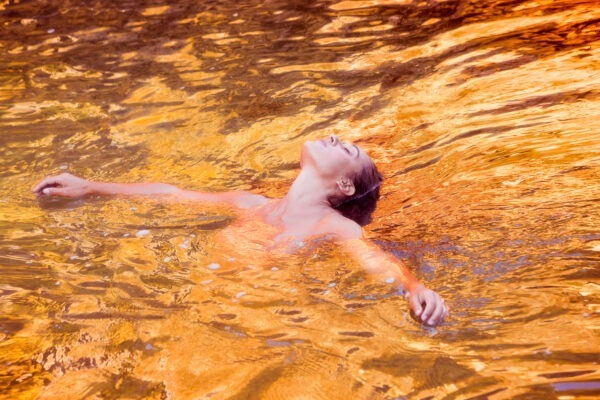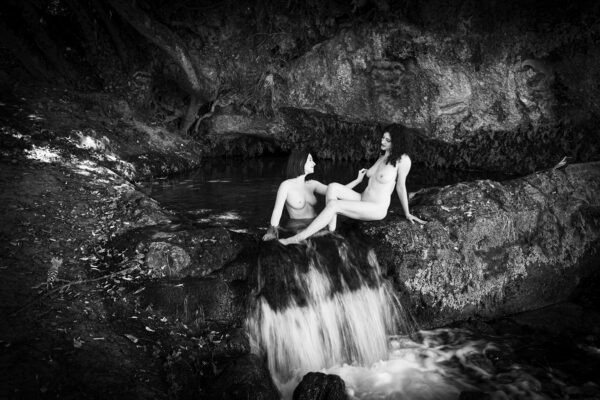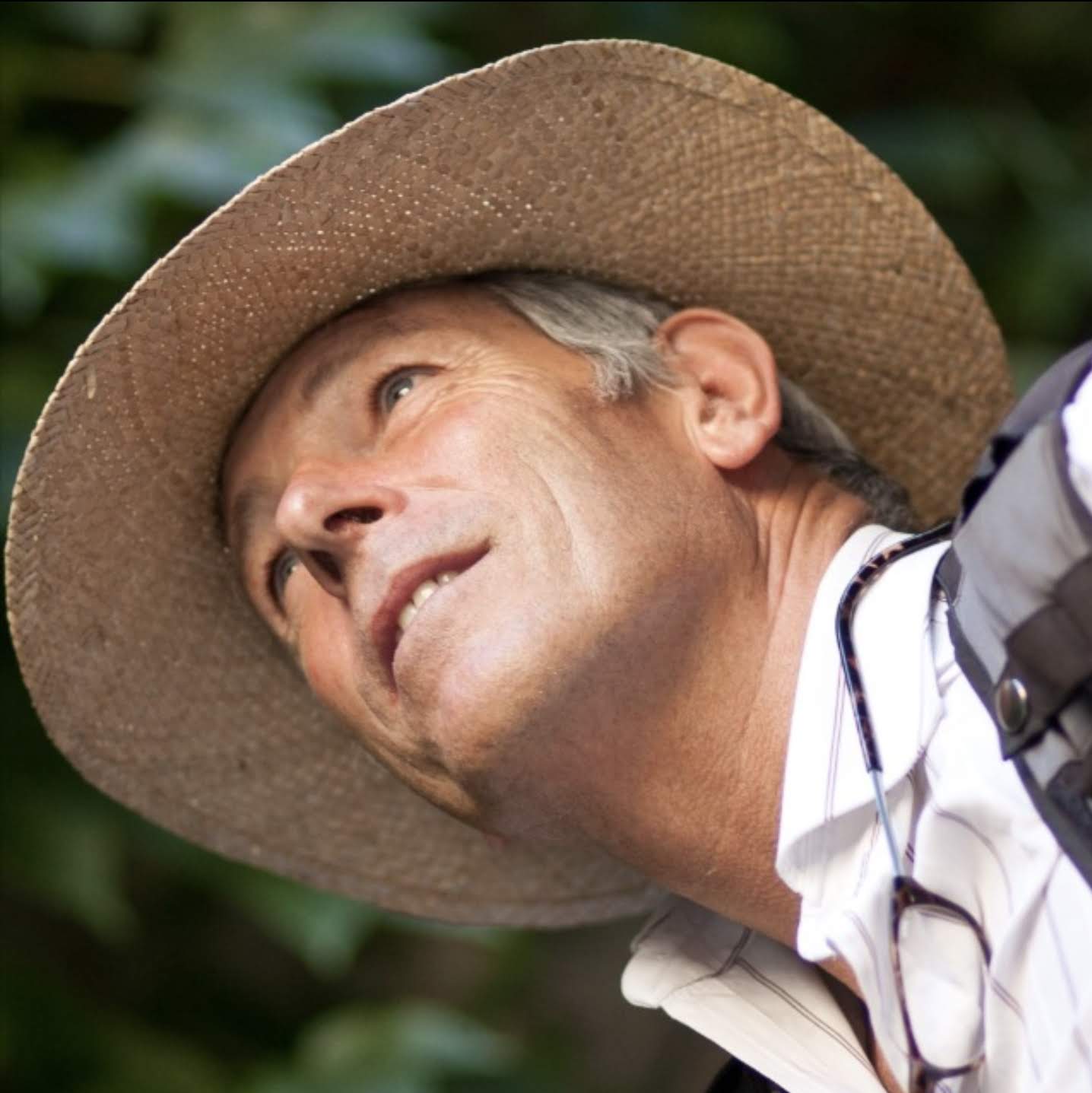In Arcadia a girl sleeps at one with nature, but this is Pan’s kingdom.
Like the Greeks we think of Arcadia as an Eden before the Fall, a sylvan idyl populated by shepherds in which man and his works are in harmony with nature, the domain of Pan. The Etrusco-Roman poet Virgil set his poem Eclogues in Arcadia, a work that has influenced artists, poets and musicians ever since.
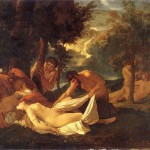
Satyrs and Sleeping Nymph (1627) Poussin
Poussin returned to the theme of Arcadia repeatedly, indeed one of the most famous paintings of all time is Et in Arcadia Ego. 16th century Rome itself was evocative of Arcadia, with a population of little more than 100,000 – more of a town than a city, it was not only surrounded by an idyllic rural landscape scattered with Roman ruins, the Roman Campagna, but was rural within too. Cows wandered in the ancient Forum, hare and even deer and were not uncommon, shepherds herded their sheep down the Corso.

